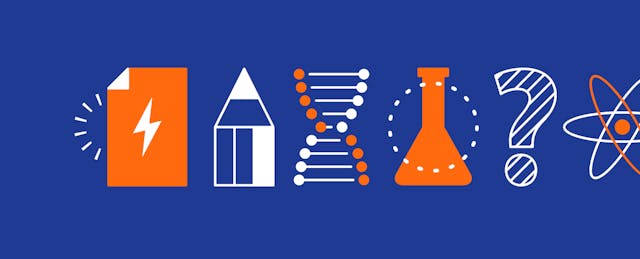As a first generation Mexican-American, I know how difficult it is to be in a classroom where everyone speaks a language that’s different from yours. My family moved from Mexico to the United States the day after my Quinceañera (15th birthday party). I was shocked at the difference it made moving just 25 miles away.
My high school experience wasn’t very pleasant. I was treated as if I was dumb because I was unable to answer teachers’ questions in English. I wanted to participate in class discussions but I couldn’t, which was frustrating. I’ll never forget meeting Mrs. Provencio, my ESL teacher, during my junior year. She was a wonderful, kind teacher, and she became a powerful influence in my life. She saw me as the person I could be—a high performer and an English-speaker. That was a refreshing change from how other teachers and my peers treated me. She communicated her high expectations, and I wanted to rise to that level of achievement.
That experience molded me into the teacher I am today. I treat my bilingual students with the same kindness and set the same high expectations for them. This is my 15th year as an elementary teacher. The last eight years I have been teaching in a science lab. I view my experience as an asset in teaching bilingual children because I can empathize with their situation. I’m always striving to find new ways to make their transition easier while providing meaningful science instruction.
Science text, however, can be difficult to read, even for advanced English-speaking students. Thus, starting a science lesson with vocabulary or reading a piece of text is not effective with bilingual students. They are already struggling with English, and giving them science vocabulary is like giving them a third language to learn.
One of the most effective strategies I’ve found is using the 5E (Engage, Explore, Explain, Elaborate, Evaluate) model of instruction in science. In my experience, here’s how it works.
Engage
Our brains remember new and exciting things. So, I start every lesson with an Engage activity to jumpstart students’ engagement in a topic, activate their prior knowledge, and boost the energy level in the lab. I try to use “wow” activities that pique their interest—e.g., a quick hands-on activity, short video or fascinating photo—so they want to learn more.
Explore
Hands-on, inquiry-based science investigations help students, especially bilingual students, learn new concepts and take part in the lesson. Touching materials helps them grasp concepts and develop skills that would be difficult to learn simply by reading about them. As students explore, the abstract becomes concrete. In addition, they feel successful and accomplished because they can “do” even if they can’t completely explain it with words.
Explain
To improve students’ science understanding—and develop their English language skills—I do require them to Explain the new concepts and skills they learned during the Explore phase. After a lab activity is completed, I pair students so they can discuss it. My goal is to give my bilingual students as many opportunities to speak as possible, and it’s much easier to talk to another student than to the entire class.
I also want them to communicate in writing, so I ask them to write a reflection in their science notebooks after each lab activity. To help them feel more comfortable with writing, I provide short, frequent, low-stakes writing opportunities. I start by using think-alouds to show them how to engage with a text, and I model the process of thinking about what they just read. I expose them to examples of the types of writing they’re expected to produce. As a scaffold, I use sentence starters and paragraph frames so they can write about their lab activity:
- “Today I learned …”
- “I observed …”
- “I was surprised by …”
- “I am curious about …”
- “I noticed that …”
- “Now I wonder …”
If they’re unable to write in English, I will accept a picture that demonstrates their understanding, which helps them become more comfortable with the idea of writing.
During this phase, we read science material as well. I provide graphic organizers—such as circle maps, T-charts, Frayer models, KWL charts and Venn diagrams—to help students make sense of what they’re reading.
In addition, I use vocabulary cards that have definitions as well as pictures or drawings to make them more comprehensible. I provide students with a word bank. I use cloze passages. We conduct class discussions. All of these methods help students explain their thinking and develop their language skills.
Elaborate
Elaboration challenges students to deepen their conceptual understanding through new, but related, experiences. Here, we explore cross-curricular connections to reading, math and other subjects.
Evaluate
I conduct formal and informal assessments to Evaluate students’ progress toward mastery. If needed, I allow my bilingual students to answer orally instead of in writing.
I’ve found other tools that are helpful, such as music. I often play science songs as students enter the lab. (Who hasn’t experienced having a song stuck in their head all day after hearing it once? I hope the same thing happens with my students!)
Technology can be helpful, too. In my science lab, we use the STEMscopes digital science curriculum, which includes digital teacher and student materials, printed materials and hands-on exploration kits. Every module in the curriculum uses the 5E lesson model with intervention and acceleration resources, which makes it easy to integrate into my instruction. It also includes a Spanish version for grades K-5, which saves me time since I don’t have to translate the materials.
When bilingual students explore, read, write, and discuss, they link new science knowledge with real experiences. The key is to lead with science, then follow with literacy. Do the hands-on activities first, then read about the content. This allows students to learn, even if they can’t yet speak the language. It also makes science more fun for everyone—including the teacher.


